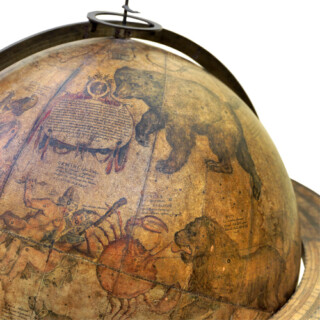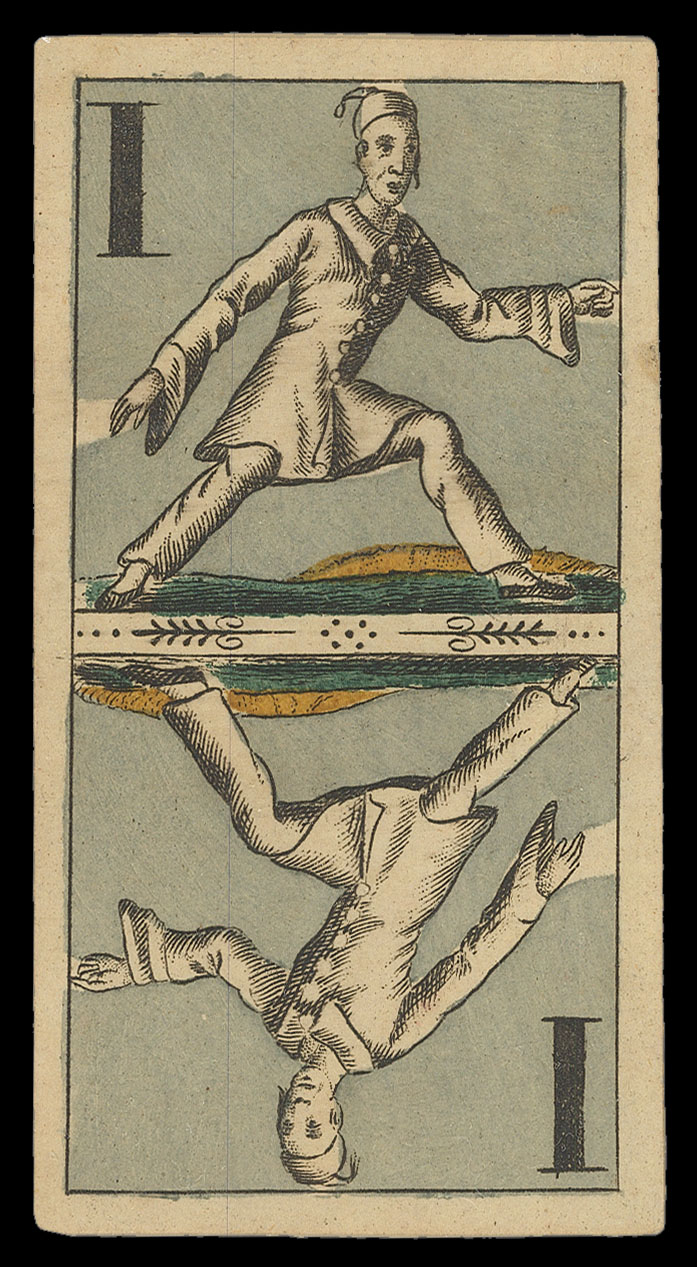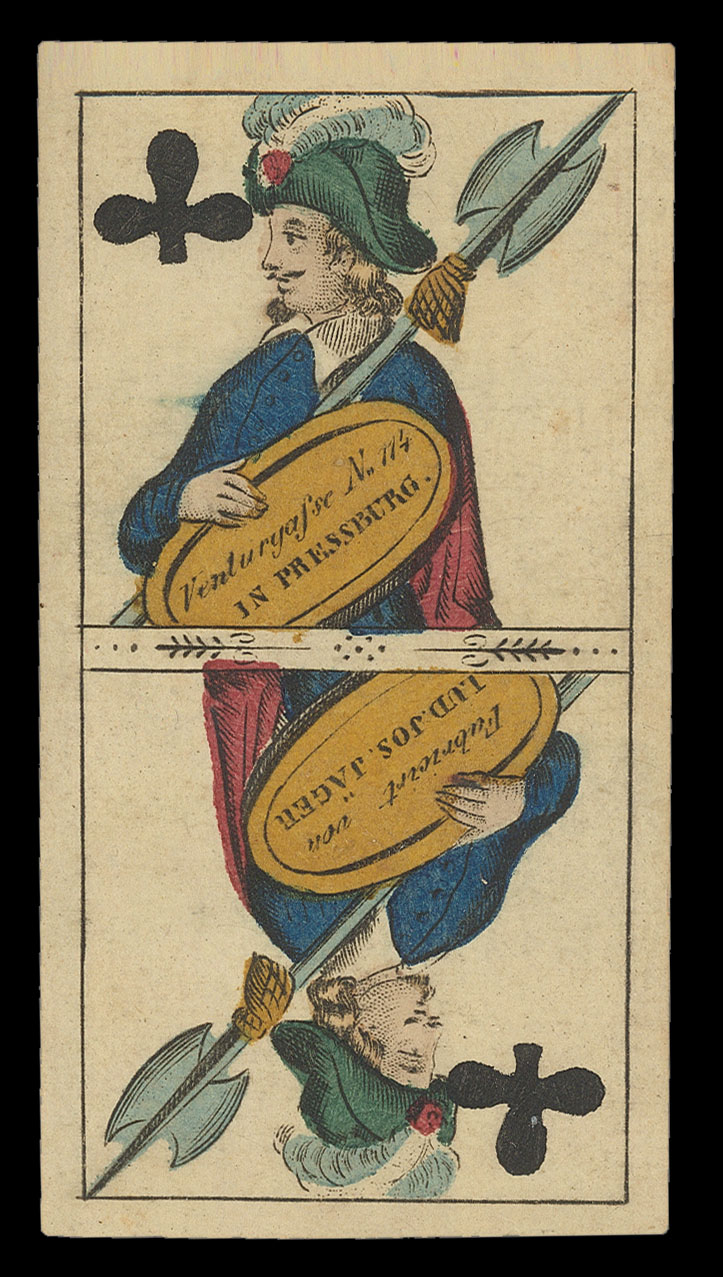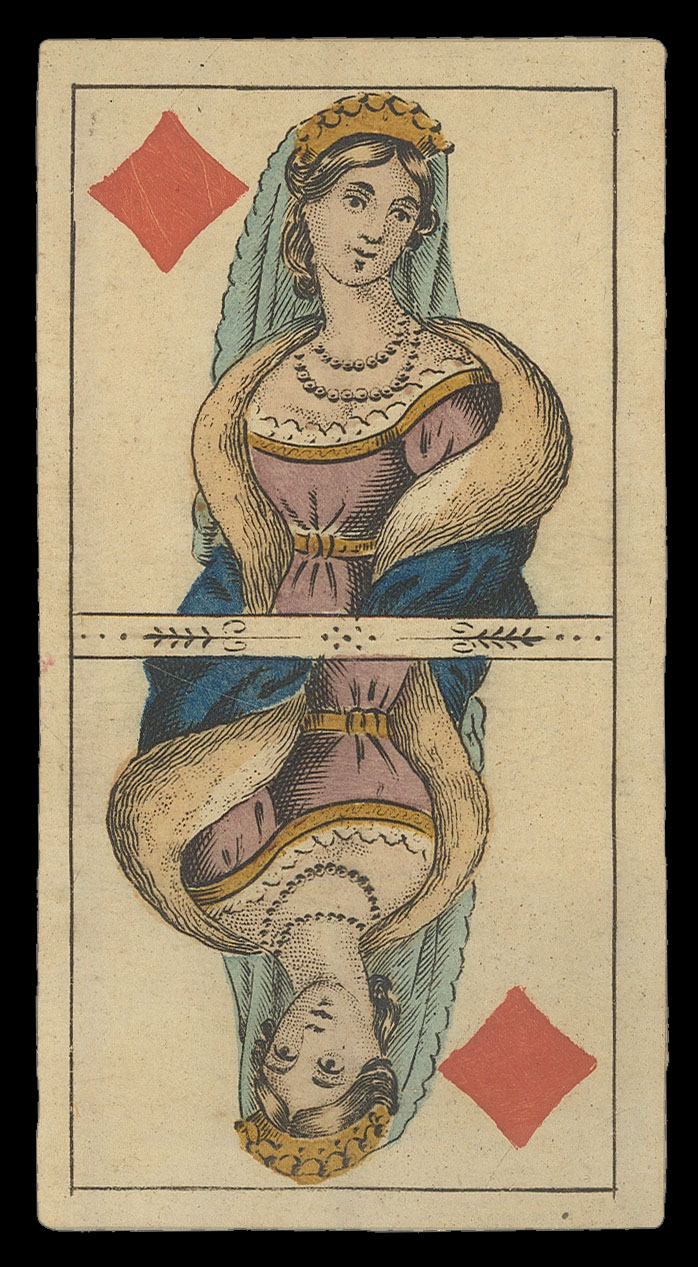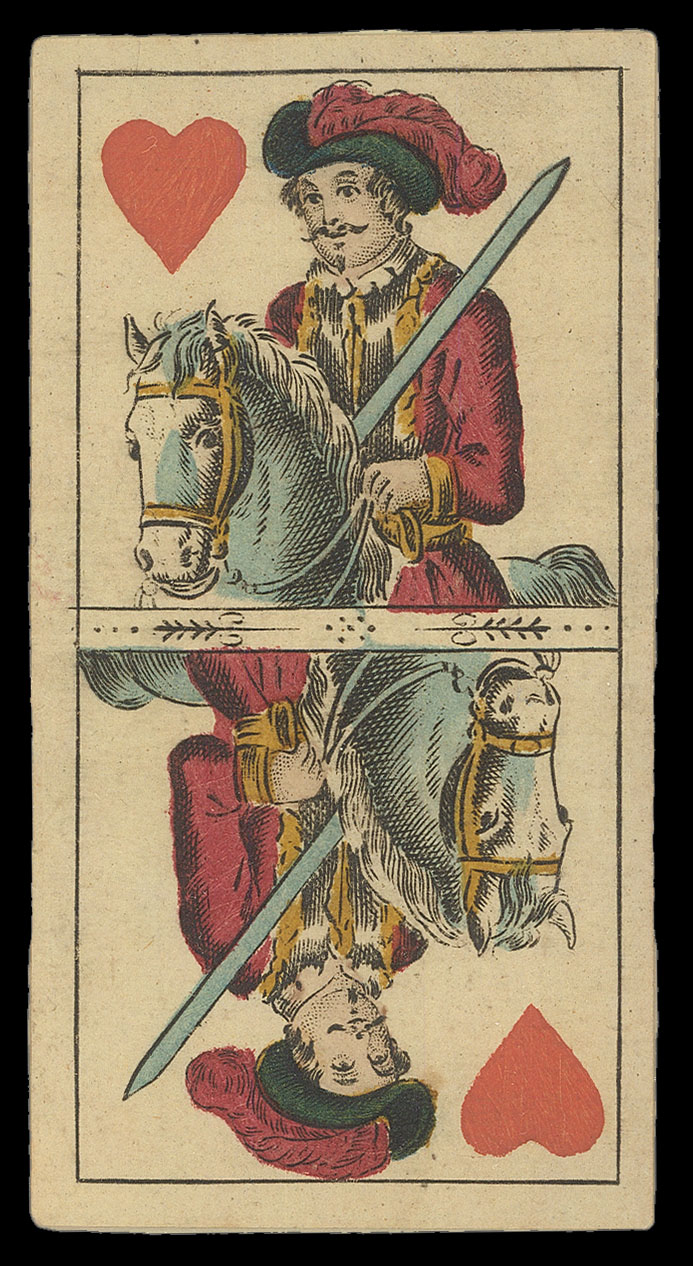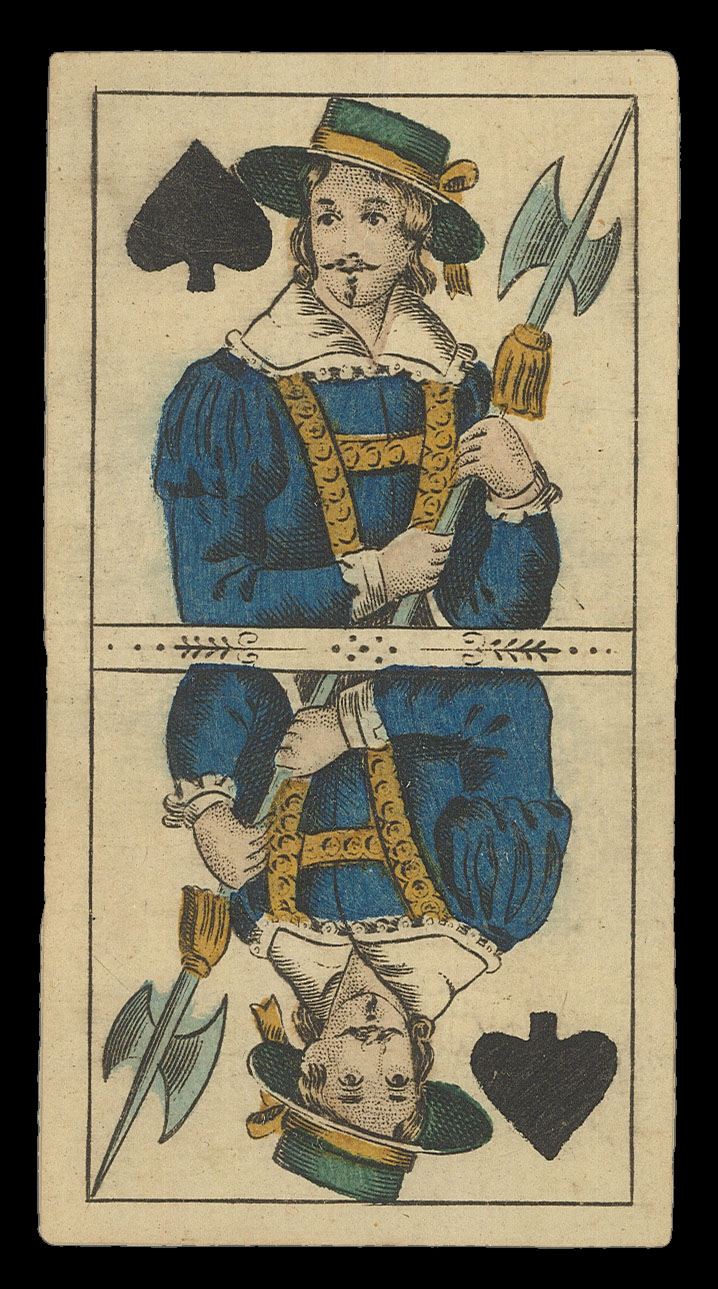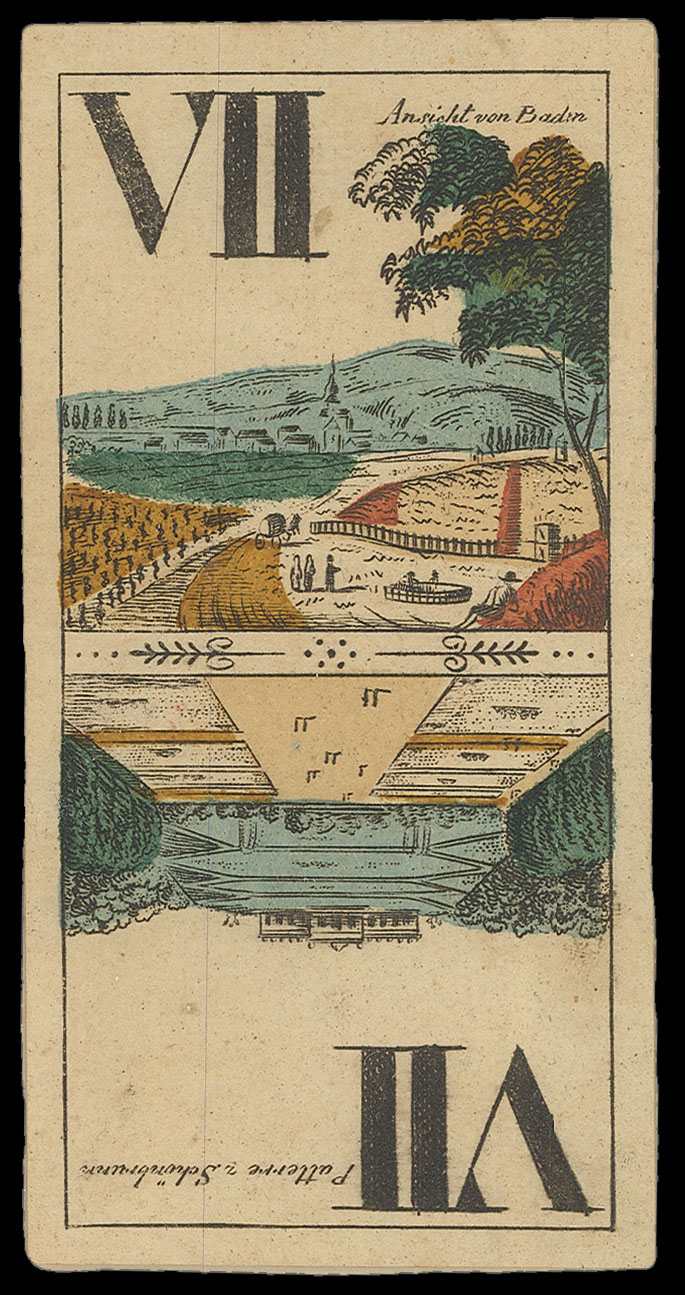The Maker
The Jack of Clubs is bearing a plate which the name of the maker is given: "Lud. Jos. Jäger" of Pressburg, now Bratislava. Other extant cards by Jäger show that he produced decks in a variety of formats, using French and German suit systems. The Skiz card in the present deck has two tax stamps, which were in use between 1850 and 1856, providing a mid-ninteenth century date for these cards.
The Cards
The Hungarian varient of the ...
The Maker
The Jack of Clubs is bearing a plate which the name of the maker is given: "Lud. Jos. Jäger" of Pressburg, now Bratislava. Other extant cards by Jäger show that he produced decks in a variety of formats, using French and German suit systems. The Skiz card in the present deck has two tax stamps, which were in use between 1850 and 1856, providing a mid-ninteenth century date for these cards.
The Cards
The Hungarian varient of the Tarock family of card games originated in ninteenth century from an Austrian version. It is thought that the 48 points required to win the game may be a reference to the 1848 Hungarian Revolution, supressed by the Russians under Ivan Fyodorovich Paskevich, after whom the game is sometimes known as 'Paskievics'. The Hungarian Tarock deck is made up of trumps (I to XXI, and a Skiz, or Fool), court cards of King, Queen, Cavalier and Jack, and then in the black suit a 10 pip card, while in the red an Ace. The present deck was made by a Slovakian card-maker in Bratislava, which was then part of the Austrian Empire, and soon after the Austro-Hungarian empire.
The court cards are double-figures and traditionally dressed in royal garb. The trump cards, with the exception of the Skiz, which shows a double-figure character holding symbols and the I, which depicts a double-figure mandarin character, all show double-sided illustrations of famous and important buildings and places within the Austrian Empire. Card VII, for example, shows a vista of Baden on one side, and Schönbrunn Palace on the other.
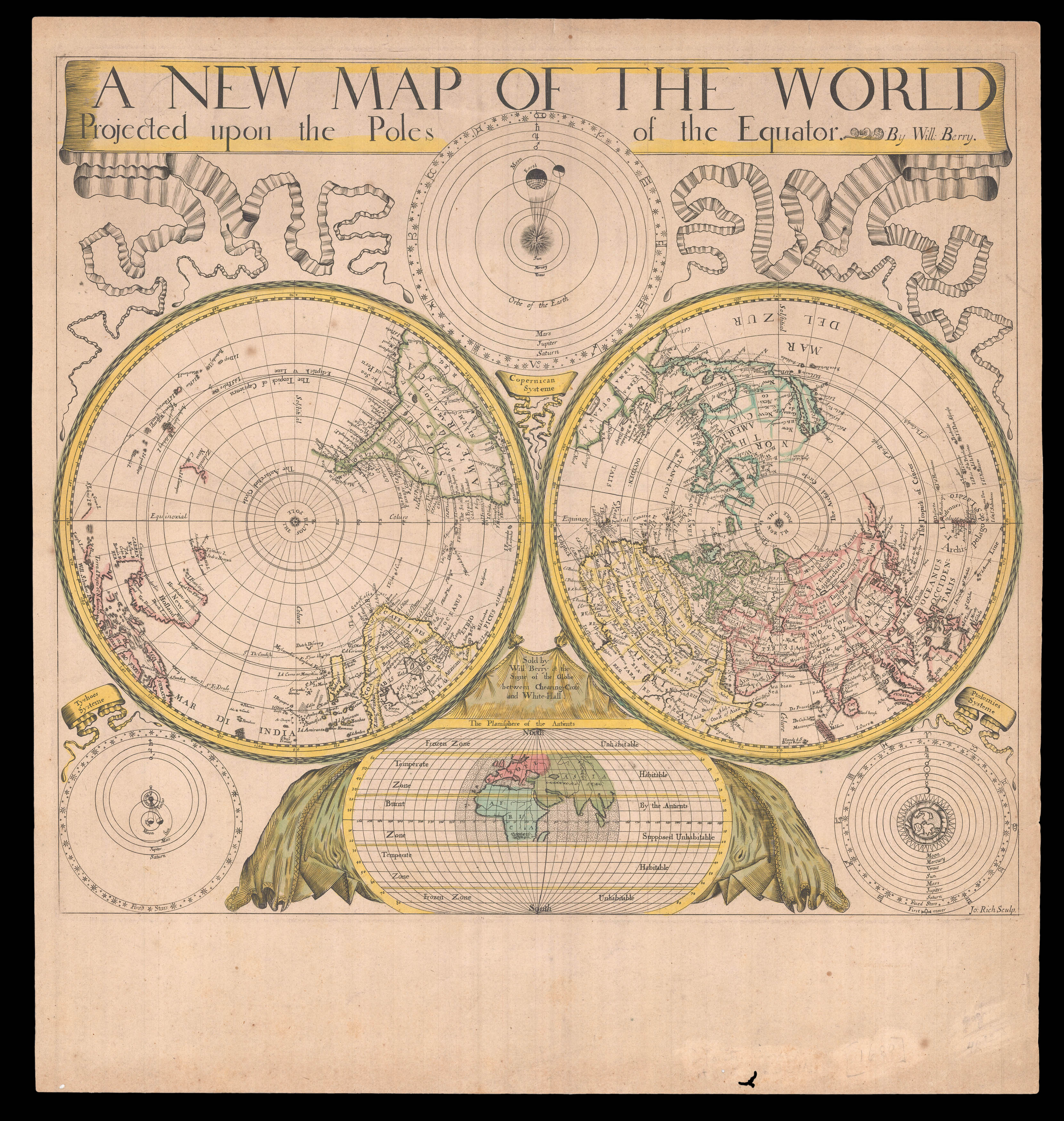 The first polar projection world map published by an Englishman
The first polar projection world map published by an Englishman 





